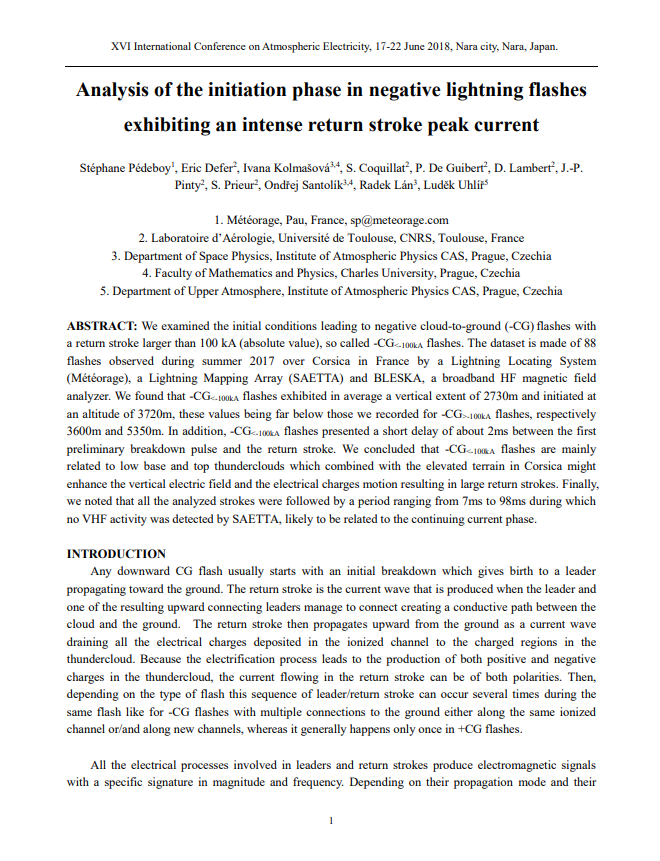Análise da fase de iniciação dos flashes negativos com um arco de retorno >100 kA
Este estudo foi publicado na 16ª Conferência Internacional sobre Eletricidade Atmosférica no Japão.
Resumo (em inglês)
We examined the initial conditions leading to negative cloud-to-ground (-CG) flashes with a return stroke larger than 100 kA (absolute value), so called -CG<-100kA flashes.
The dataset is made of 88 flashes observed during summer 2017 over Corsica in France by a Lightning Locating System (Météorage), a Lightning Mapping Array (SAETTA) and BLESKA, a broadband HF magnetic field analyzer.
We found that -CG<-100kA flashes exhibited in average a vertical extent of 2730m and initiated at an altitude of 3720m, these values being far below those we recorded for -CG>-100kA flashes, respectively 3600m and 5350m. In addition, -CG<-100kA flashes presented a short delay of about 2ms between the first preliminary breakdown pulse and the return stroke.
We concluded that -CG<-100kA flashes are mainly related to low base and top thunderclouds which combined with the elevated terrain in Corsica might enhance the vertical electric field and the electrical charges motion resulting in large return strokes.
Finally, we noted that all the analyzed strokes were followed by a period ranging from 7ms to 98ms during which no VHF activity was detected by SAETTA, likely to be related to the continuing current phase.

